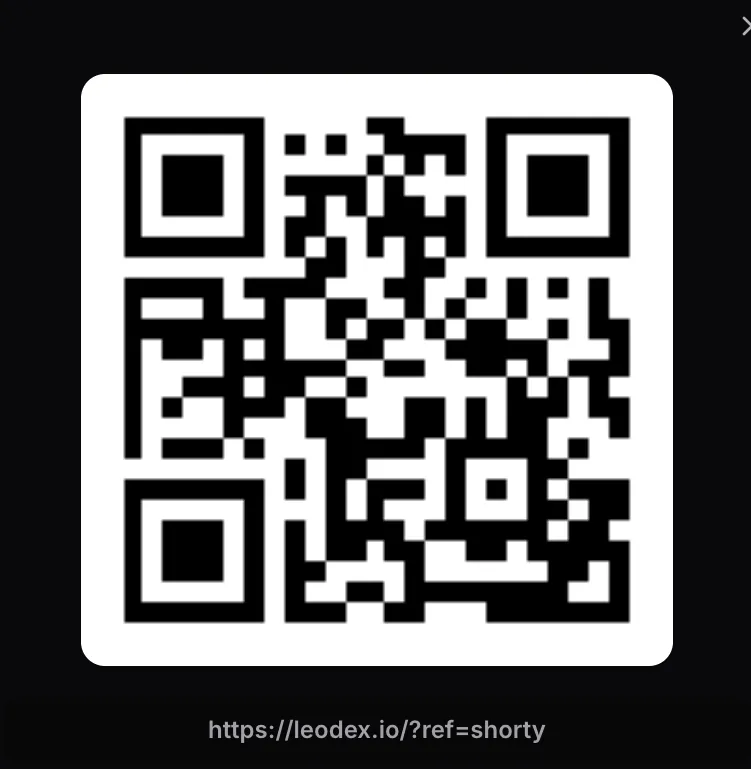Introduction:
This essay is my attempt to pull together all the changes on Inleo and in the Leofinance world into a cohesive narrative and explainer.
- Tomorrow June 18th is the launch of brand new tokenomics for the community utility token Leo. But it is just one change in the community and it's decentralized applications, which all represent a shift from a focus on decentralized financial applications to a focus on connections.
- When I look at Inleo I see not just the Inleo Social Community with Threads, Posts and Comments. I also see the decentralized cryptocurrency exchange LeoDex and I see the cross blockchain bridge WLEO.io which connects the Hive blockchain to the Ethereum blockchain, Binance Smart Chain, Polygon, Arbetrum and through other connections Solana and Cosmos.
- While all of these are software constructs, the tokens, the bridges and the exchange seem to serve a greater purpose: easy connectivity. I see them being part of a philosophy of connecting Hive community members to the best decentralized finance projects on any blockchain; bitcoin, Ethereum, Binance, Polygon, Arbetrum, Thorchain, Solana or Cosmos.

Tomorrows Event the change from our current tokenomics called Leo 1.0 to the new tokenomics acalled Leo 2.0.
- The crypto world is constantly evolving, and the InLeo platform is making a significant move that could redefine the value of its native token, LEO. This change involves a shift from an inflationary to a zero-inflation and potentially deflationary model, powered by the platform's success and its strategic cross-chain integrations.
- I think it reasonable to stop and define these terms better, so we understand the changes which are coming better.
Understanding Tokenomics: Inflationary vs. Deflationary
To grasp the magnitude of LEO's transformation, it's essential to understand the two core types of tokenomics:
Inflationary Tokenomics:
- Concept: In this model, the total supply of a cryptocurrency continuously increases as new tokens are "minted" or created over time.
- Purpose: This is often done to reward network participants (like miners or validators), fund project development, or encourage token spending. Think of it like a central bank printing more money.
- Potential Drawbacks: The main concern is dilution of value. If new tokens are created faster than demand grows, each existing token's value can decrease.
Deflationary Tokenomics:
- Concept: This model involves the total supply of a cryptocurrency decreasing over time as tokens are permanently removed from circulation.
- Purpose: The primary goal is to create scarcity, which, if demand remains stable or increases, can lead to increased value for the remaining tokens. This is often achieved through "token burning," where tokens are sent to an unusable address, or through "buyback-and-burn" mechanisms, where project revenue is used to buy and destroy tokens.
- Potential Drawbacks: While generally seen as positive for value, extreme deflation can sometimes discourage active usage if holders prefer to "HODL" (hold on for dear life) rather than spend.
The Impact of Shifting to Deflationary Tokenomics
When a token moves from an inflationary to a deflationary model, it signals a strategic commitment to reducing its supply. This typically aims to align the token's long-term value with the ecosystem's success, making it a more scarce and potentially valuable digital asset. For token holders, this shift can significantly enhance its appeal as an investment and strengthen its practical utility within the ecosystem.
LEO 2.0: The Launch of a Deflationary Future
The LEO token, which previously funded rewards by creating new tokens (inflation), is making a pivotal change. It's transitioning to a system where no new LEO tokens will be created, and the total supply might even decrease, making it a truly deflationary asset.
What's Happening?
Instead of printing new LEO tokens for rewards, the INLEO platform, especially its highly successful LeoDex app, will use its earnings to buy back LEO tokens directly from the open market. These acquired tokens will then autonomously populate the System Income Rewards Pool (SIRP), which will be the new source for author and curation rewards.
This significant change was originally planned for the mid-2030s but is being fast-tracked due to LeoDex's impressive performance and growing revenue. "Wen" (when) has truly become "Soon."
Key Points of the Accelerated SIRP Model:
- End of Inflationary Rewards: The existing LEO inflationary rewards pool, which has funded rewards for the past six years, will stop minting new tokens. This marks the end of LEO's initial distribution phase.
- Revenue-Driven Rewards Pool: The new rewards pool will be fueled by income generated from INLEO platforms, with LeoDex playing a crucial role.
- LEO Buybacks: Revenue will be systematically used to buy back LEO tokens from the market.
- Autonomous SIRP Funding: These bought-back LEO tokens will automatically fund the SIRP, ensuring a sustainable source of rewards.
- Consistent Reward Distribution: The way author and curation rewards are given out will stay the same; only the source of these rewards changes from newly minted tokens to tokens acquired through buybacks.
- Deflationary LEO: By stopping new LEO minting and introducing ongoing buybacks (along with adjustments to LEO Bridges), the LEO token is poised to become a truly deflationary asset, meaning its total supply will decrease over time.
ALEO: Expanding Hive's Reach and Utility Across Blockchains
Beyond its tokenomic shift, the InLeo ecosystem is strategically extending its presence across the broader Web3 landscape through the Leo Arbitrum token, universally known as ALEO. ALEO is not just a wrapped asset; it's a vital bridge that enhances the utility and reach of Hive-native assets.
What is ALEO?
At its core, ALEO is a wrapped representation of the LeoFinance LEO token. The original LEO token lives on the Hive blockchain and its Hive Engine sidechain, powering InLeo's content creation, curation rewards, and decentralized governance. To expand its reach, LeoFinance developed a sophisticated bridging mechanism accessible via wleo.io. This bridge allows users to "wrap" their native Hive Engine LEO into equivalent, interoperable tokens on various EVM-compatible blockchains. When wrapped and transferred to the Arbitrum network, the resulting token is specifically designated as ALEO.
- Arbitrum's Role: Arbitrum, as a leading Layer 2 scaling solution for Ethereum, significantly enhances ALEO's utility by providing faster and more cost-effective transactions compared to the main Ethereum network.
- ERC-20 Standard: As an Arbitrum token, ALEO follows the ERC-20 standard, ensuring seamless compatibility with a vast array of decentralized applications (dApps), digital wallets, and exchanges within the Arbitrum ecosystem.
The wleo.io Bridge and Its Importance:
The wleo.io bridge is crucial for LeoFinance's multi-chain strategy. It expands LEO's reach far beyond Hive, connecting it to major DeFi hubs through wrapped versions like wLEO (Ethereum), bLEO (Binance Smart Chain), pLEO (Polygon), and ALEO (Arbitrum). This fosters enhanced interoperability, breaking down blockchain "silos" and proving that Hive assets can seamlessly function on major Layer 2 solutions. It also allows LEO to tap into deeper liquidity pools across these diverse EVM chains.
ALEO's Impact on the Hive Blockchain and InLeo:
- Extending Hive's Reach: ALEO attracts new users already on Arbitrum into the Hive and LeoFinance ecosystems, increasing brand awareness and showcasing Hive's real-world utility.
- Showcasing Interoperability: It directly demonstrates Hive's robust bridging capabilities, facilitating the free flow of value.
- Attracting Capital & Liquidity: ALEO taps into larger liquidity pools on Arbitrum-based decentralized exchanges (DEXs), making LEO easier to trade and opening up new DeFi opportunities (e.g., yield farming, lending) that are not as readily available or cost-effective on native Hive.
- Reducing Costs & Increasing Speed: Arbitrum's lower fees and rapid transaction finality make frequent trading and complex DeFi strategies more viable for ALEO holders, encouraging active participation in the LEO economy.
- Expanding Use Cases & Future-Proofing: ALEO's ERC-20 compatibility opens doors for integration with a vast array of dApps and strategic partnerships, ensuring LEO's long-term relevance.
LeoDex: The Revenue Engine and Cross-Chain Gateway
LeoDex plays a truly crucial and synergistic role. It acts as a cross-chain DEX aggregator and interface that leverages various underlying liquidity protocols to facilitate seamless swaps. Its success is the direct reason why the LEO tokenomics shift is being accelerated.
Connecting to Major Protocols:
LeoDex is built to route native asset swaps across dozens of chains, primarily powered by major cross-chain liquidity protocols like THORChain, Maya Protocol (MayaChain), and Chainflip (connecting to the Solana Ecosystem). This means LeoDex intelligently finds the best routes and rates for swapping assets like BTC, ETH, and various other cryptocurrencies with minimal slippage and direct native settlement. For instance, the CACAO-ALEO trading pair on CacaoSwap is a direct example, leveraging Maya Protocol's cross-chain capabilities.
Significance for InLeo and Hive:
By integrating these powerful cross-chain protocols, LeoDex provides an easy-to-use, non-custodial gateway for the InLeo community to interact with assets from virtually any major blockchain. This massively increases the overall liquidity and trading opportunities for LEO and other Hive-based tokens, making them more accessible to a global audience. Crucially, LeoDex directly contributes to the revenue generation that will fuel the new System Income Rewards Pool (SIRP) for LEO tokenomics, further bolstering the ecosystem.
Keplr Wallet: Bridging to the Cosmos Ecosystem
The Keplr Wallet is another vital piece for Hive's interchain connectivity, specifically bridging it to the Cosmos ecosystem. Keplr is the leading wallet for Cosmos SDK-based blockchains, connected via the Inter-Blockchain Communication (IBC) protocol, which allows independent blockchains to securely communicate and exchange assets.
While Hive isn't a Cosmos SDK chain, the increasing interoperability means connections can be established. For users active in both Hive and Cosmos, Keplr acts as their primary interface for managing Cosmos assets. This presence within the broader Web3 space, facilitated by tools like Keplr (for Cosmos) and wrapped assets like ALEO (for EVM chains), suggests future possibilities for more direct bridging solutions between Hive and Cosmos, further solidifying Hive's position as a truly interconnected blockchain.
Conclusion: The Unified Vision of LEO's Future
The entire Leofinance ecosystem, viewed holistically—from the transformative LEO 2.0 deflationary tokenomics powered by LeoDex's revenue to the expanded multi-chain capabilities enabled by ALEO, the wleo.io bridge, integrations with THORChain, MayaChain (CacaoSwap), and Chainflip, and the Keplr Wallet connecting to Cosmos—forms a robust and forward-looking strategy.
This combined approach ensures that Hive-native assets are not isolated. Instead, they are deeply integrated into the liquidity, utility, and innovation streams of the broader decentralized world, positioning LEO for a sustainable and valuable future.
The LEO 2.0 launch event is scheduled for Wednesday, June 18th, at Noon EST. The team will continue to provide detailed information through videos and weekly Q&A sessions every Tuesday at Noon EST. Community members are encouraged to utilize and share LeoDex.io as a premier platform for trading cross-chain assets.
The End
@shortsegments
 #Thankyou #for #reading #my #post
#Thankyou #for #reading #my #post
The team also encourages everyone to use LeoDex.io for trading. You can even get a 10% discount on trades by using the referral code "shorty."
Join under me and I will send you Leo! and Hive in Appreciation!

This article was published on the social website called Inleo.

Inleo
- Inleo looks like many other social media platforms on the outside, so it is easy to use. But it is different from other social media platforms on the inside because you are an Owner.
Being an Owner means:
- 1 , You own your account, it can't be closed. [No Deplatforming.]
- 2, You own your content, so no one can take it down. [It's Permanent]
- 3, You own your following, so no one can take them away.
This means the following:
- Your account can't be taken down and closed.
- Your content can't be confiscated and/or erased.
- Your following can't be lost. They are your followers until they leave you.
#wow!
Join for free, have fun and learn to earn.
- 1, Open an account for free and choose your name.
- 2, JOIN4FREE.